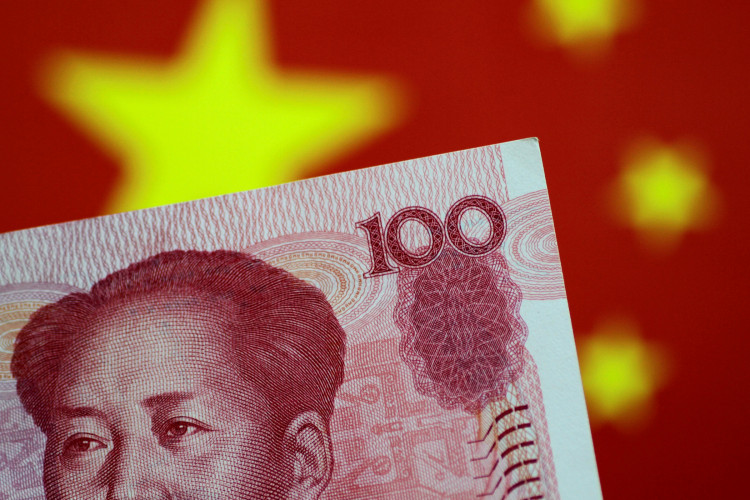China's industrial firms suffered their steepest profit decline in nearly three years in September, underscoring the mounting challenges in the world's second-largest economy and intensifying pressure on policymakers to bolster growth.
Industrial profits fell 27.1% year-over-year in September, accelerating from a 17.8% drop in August, according to data released Sunday by the National Bureau of Statistics (NBS). The slump marks the sharpest monthly decline since March 2020, when profits tumbled 34.9% amid the initial shock of the COVID-19 pandemic.
The downturn in profits highlights persistent weaknesses in China's economy, including sluggish domestic demand, deflationary pressures, and a beleaguered property sector. "Insufficient demand and a sharp decline in producer prices have weighed heavily on the profitability of industrial enterprises," said NBS statistician Wei Ning in a statement accompanying the data release.
In the first nine months of 2023, industrial profits decreased by 3.5% compared to the same period last year, reversing a modest 0.5% gain recorded in the January-August timeframe. The deterioration signals that earlier measures to stabilize growth have yet to gain traction.
Economists are calling for more assertive policy responses. "This data underscores the need for more forceful stimulus amid weak domestic demand and deflationary pressures," Hui Shan, chief China economist at Goldman Sachs, wrote in a note on Sunday.
Producer prices have continued to decline, exacerbating profit margins. The Producer Price Index (PPI) fell 2.8% year-over-year in September, a steeper drop than the 1.8% decline in August, reflecting lower input costs but also signaling weak industrial demand.
"The weakness of industrial profits indicates China's greater need for demand-side policies," said Gary Ng, senior economist at Natixis, in an email to CNBC. "While there is divergence across sectors, the stress is particularly high in upstream materials and automobiles."
The automotive industry, a key pillar of China's manufacturing sector, has been notably affected. Profits in the auto industry plunged 21.4% year-over-year to 30.5 billion yuan ($4.17 billion) in August, according to data from the China Passenger Car Association. Price cuts and tepid demand have pressured automakers' bottom lines.
China's economy grew by 4.6% in the third quarter, the slowest pace since early 2023, as the property market crisis and subdued consumer spending weighed on activity. For the first three quarters, the economy expanded by an annual 4.8%, slightly below the 5% growth target set by Beijing for 2024.
To counter the slowdown, Chinese authorities have ramped up policy support. The nation's top legislative body, the National People's Congress, is scheduled to meet from Nov. 4-8, where details of a highly anticipated fiscal stimulus package are expected to be unveiled. Speculation has mounted over the size of the potential stimulus, with reports suggesting it could involve raising up to 6 trillion yuan ($842.7 billion) through special treasury bonds over three years.
China's Finance Minister has pledged additional fiscal measures to revive the faltering economy, following the central bank's announcement last month of the most aggressive monetary support since the pandemic. However, specifics on the scale and scope of the fiscal package remain undisclosed.
"Recently unveiled policy measures will foster a favorable environment for the production and operation of industrial enterprises, supporting the recovery and improvement of their profits," Wei Ning of the NBS stated.
Market participants are closely watching the upcoming release of the official manufacturing Purchasing Managers' Index (PMI) for October, set for Thursday. Economists polled by Reuters anticipate a reading of 50.1, which would indicate a return to expansion after five consecutive months of contraction. The PMI was 49.8 in September, with readings below 50 signaling a contraction in activity.
A breakdown of the NBS data revealed mixed performances across different ownership structures. State-owned enterprises saw profits decline by 6.5% in the first nine months, while private-sector companies posted a 0.6% drop. In contrast, foreign firms operating in China recorded a modest earnings increase of 1.5% during the same period.
The persistent profit declines have raised concerns about the overall health of China's industrial sector and its capacity to drive economic growth. "The prolonged weakness in industrial profits suggests that the challenges are not just cyclical but also structural," said Mr. Ng of Natixis. "Without stronger demand-side measures, the recovery may remain sluggish."
Deflationary pressures add another layer of complexity to the policy landscape. With producer prices falling, companies may hesitate to invest or expand production, anticipating lower returns. This dynamic can create a feedback loop that further dampens economic activity.
As Beijing prepares to introduce new fiscal policies, analysts emphasize the importance of timely and effective implementation. "The forthcoming stimulus measures need to be substantial and targeted to address the specific areas of weakness," said Ms. Shan of Goldman Sachs. "Swift action is essential to restore confidence and prevent a deeper slowdown."






